BOO! Did I get you? Well, I guess we can all agree that a little scare here and there isn’t so bad, especially during the Halloween season. Some even prefer to watch horror movies to evoke scares, but when it comes to our horses, that little scare becomes an entirely different story. In the world of equine living, there is no such thing as fictitious monsters who haunt the halls of abandoned barns or ghosts of the past coming back to life. So, when our horses do spook, it is actually something far more real and scary, well at least in the minds of our four-legged friends.
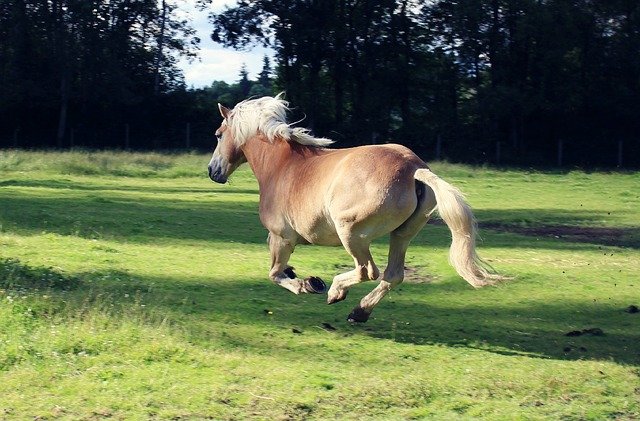
Spooking is a natural trait that many horses possess, taking into consideration a horse’s innate “fight or flight” response. In the wild, a spooked horse is a lot better off than a dead one. But we run into a problem when we add humans into the mix, now putting both horse and rider in danger. The trick is to figure out how to manage and deal with a spooked horse in a way that keeps both parties safe. With this in mind, here are five tips to dealing with a spooky horse so that the only scare you have to worry about is the one on the screen.
1. Focusing On You.
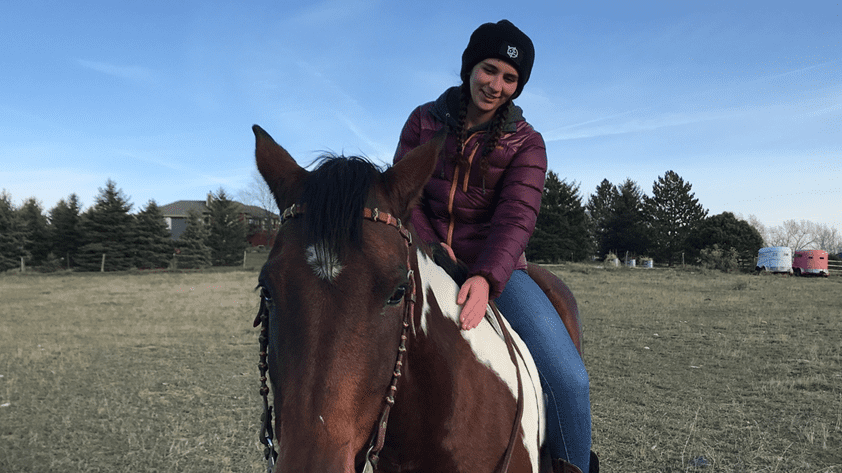
As riders, we have a responsibility to know that when our horses spook, there is a high chance that that very behaviour may have a lot to do with our own body language and energy.
Horses are extraordinary at reading and reacting to body language, based off feel alone during each training session. If they sense that you are worried, scared, or even nervous, they tend to respond in a similar manner. This also works on the flip side, when we feel confident in our saddle and manifest a successful practice, the horse will display similar emotions, clueing into those “breakthrough moments.” It is as if your energy and emotions are being directly transmitted through the saddle from you to the horse, creating somewhat of a shared mental learning space. You can also think about this concept by using the very common sports’ motto; “There’s no I in team.” When you work with your horse, whether its clearing high-level jumps or simply working the ground, you are creating a team-based environment, requiring a certain amount of dedication and focus on each end. If one side is lacking in motivation, confidence, or even willingness to work, the entire team suffers.
Keeping this mentality in mind, take some time getting to know yourself as a rider, trainer, or even just as the individual. Become more familiar with how you deal with stressful events, and more specifically how your body tends to react in those circumstances. How can you expect your horse to remain bombproof through high-anxiety situations when you’re not even able to? Doesn’t seem fair, does it? Having said that, I am in no way trying to fill in as a therapist, as we dive into emotional stress triggers, but rather as a cautionary voice reminding you to keep the self in mind when riding.
Think of it as leaving the human drama outside the equine pen, keeping the conversation solely on you and the thousand-pound animal beneath you. On days where you find yourself particularly stressed or overworked, try to wrestle with those emotions before your riding session. This further ensures that you are not dumping your stress and anxiety on your horse, thus getting you one step closer to a less-spooked horse.
“Horses are extraordinary at reading and reacting to body language, based off feel alone during each training session. If they sense that you are worried, scared, or even nervous, they tend to respond in a similar manner.”
Jordan Bastian
2. Taking A Closer Look
While rider mentality can have a lot to do with the riding experience, sometimes the problem is simply within the horse, meaning that particular creature is just more prone to spooky behavior. In this case, we must take a closer look to truly identify the root of those skittish tendencies keeping in mind that every behaviour has a designated reason.
One of the biggest problems in horse-to-human connections is the constant desire to anthropomorphize these creatures, despite the obvious addition of two more legs and a tail. As soon as we assign human characteristics to equine behavior, we become more and more out-of-touch with their true behavioural traits. A horse will never do anything just for the hell of it; there is always a reason for their maybe over exaggerated reaction. For instance, claiming that your horse is being lazy is not only incorrect, but is essentially assigning a characteristic that simply does not exist within their vocabulary, if you will. Maintaining this ideal will drastically help us as equestrians better understand why some horses are more prone to spook than others.
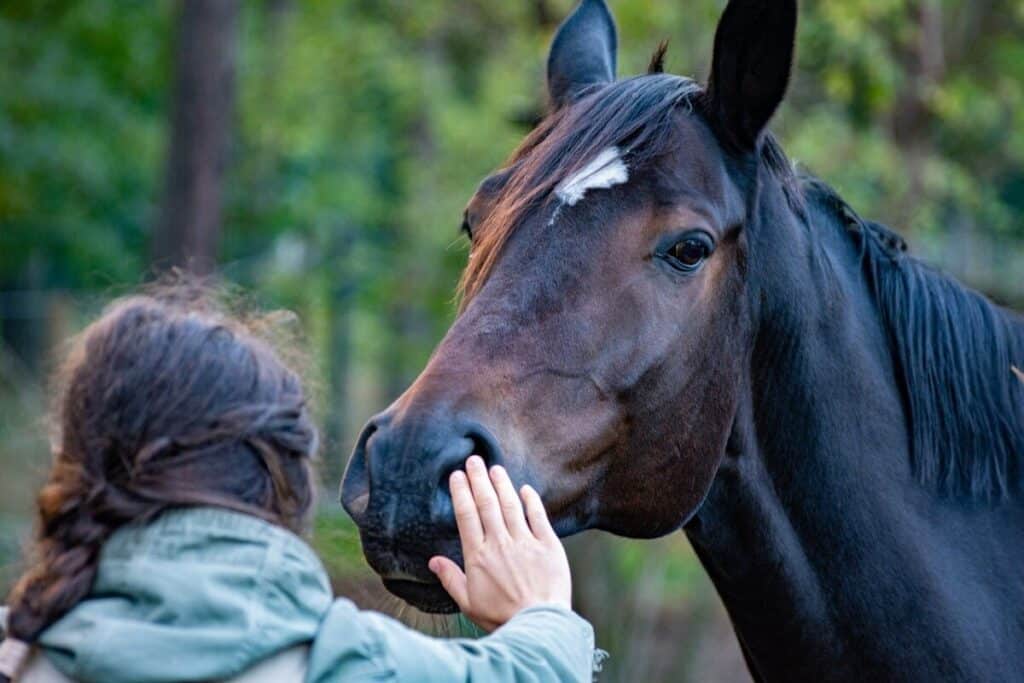
Dealing with these types of horses usually takes time and patience in order to really address the root of their “issues.” The main concept here is to compartmentalize your training habits into monitored units, as if breaking them into individual steps. This method will help you focus in on what is causing the spooking in the first place and begin working up from there. To truly get the most out of this method, be sure to factor in even the dullest of tasks, down to catching and grooming so that you can be sure you have identified the correct root.
For instance, your new tacking up routine for that more standoffish horse follows a step-by-step plan from the moment you catch to the moment you let them out to pasture. Think of it as retracing your steps, finding your way back to that particularly unfavourable trait, as if you lost it. This does not necessarily mean you have to slow everything down, but rather just watch each unit with a more careful eye.
Let’s think about this method in a more practical sense by using an example to more clearly illustrate it. A couple years ago, I was in the middle of working with a 2-year-old colt named Scarface, who had a particularly hard time being tied. Throughout the many weeks and hours working with this colt, we just could not seem to build a working relationship as he would continuously spook and bolt. Frustrated and tired, my trainer and I decided to slow things down, retracing our steps to see if we missed anything and sure enough we did. We discovered that when Scarface arrived on the trailer, he had injured his head trying to get out of the confined space, leaving him terrified of being bound in any way. This meant that every time I caught and tied him or even brought him into a smaller barn, his mind immediately assumed he was back in that trailer with no foreseeable escape. So, I went back to tying and desensitization training, and within no time at all, Scarface and I became the best of partners.
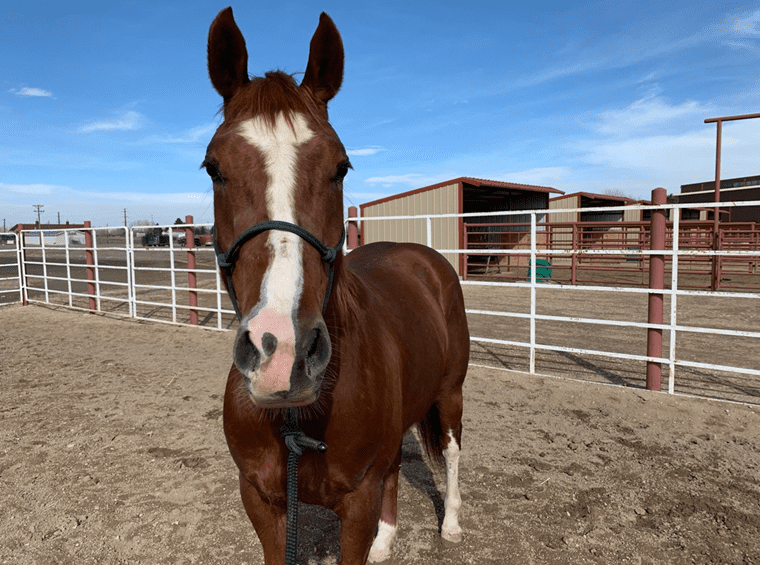
While this method might seem lengthy at times, it is considerably game-changing for those more timid horses. Just remember, horses are not humans.
3. Always Warm Up & Cool Down.
While many spookish behaviours can be buried under the complexity of lengthy routines and negative associations, sometimes your horse is just feeling a little too fresh.
Warming up is a pivotal part of your daily riding routine and can have a serious impact on your team’s overall work ethic. It is a practice that both mentally and physically prepares your horse for the work that is to come and is particularly exponential when working with a horse that has had some time off or during the winter months. All it takes is a few walking and jogging circles or exercises to get their mind thinking, thus connecting their head to their feet. The best warm up exercises include engaging and disengaging of the hind and fore quarters, giving you better control over your horse’s feet and head.
While it doesn’t seem as crucial, cooling down is just as important for your team’s future riding experiences. Think of it as ending on a good note, setting a positive attitude for the next session. The last thing you want is your horse all hot and bothered at the end of practice, letting that be the last memory they have of doing work, which in turn automatically sets a bad precedent for the next time.
4. Let Them Spook
As mentioned before, horses always have a reason for their actions and some of those actions just need to be carried out all the way through. While it may seem counter intuitive, when your horse spooks, let them spook the problem out, given that you are in a position to do so. Obviously, if that spooking nature puts you in considerable danger, either use the one-rain stop or another safe method to get yourself out of harm’s way.
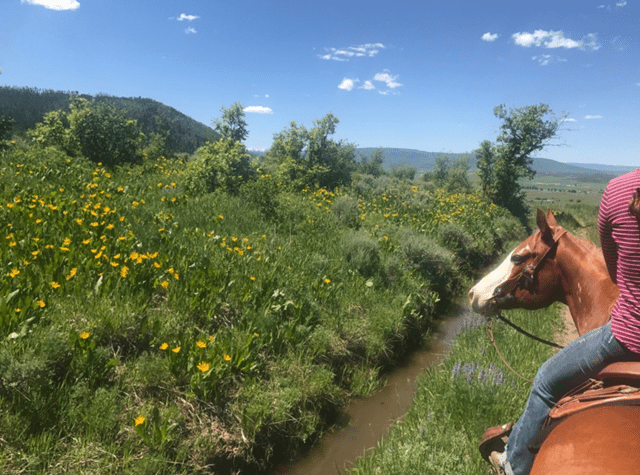
If you are able to let your horse feel their spook, this is a great method to dealing with the issue all together. When doing so, be patient while allowing them to feel those more intense emotions, causing them to come face-to-face with their fear. After their spooked reaction, provide your horse with pets and comfort, reassuring to them that, “yes, you are in fact still alive even after seeing that very scary rock.” This lets them know that even though they were presented with a stressful stimulus, they lived through it, making that oh-so terrifying rock maybe not as bad.
Before moving on, be sure that you are ok and are maintaining a relaxed state for your horse to shadow. Using soft hands and keeping your body calm, try to direct your horse back to the original stimulus, letting them smell and feel it out with a more relaxed mindset. This might take a few tries, as your horse needs time to get used to it, but nevertheless, keep going. You are essentially taking your horse back to the scene of the crime until their reaction transitions from “Oh heck no,” to “Oh, ok this isn’t that bad.”
This method can be compared to the feeling of just needed to let out that occasionally scream in order to truly deal with an outside stress. As always, put the safety of the team above all else and if at any point you feel uncomfortable, take a step back and reassess the situation if needed.
5. Watching Your Horse At Pasture.
When horses are out to pasture, they are being their true and authentic selves, where they innate traits and characteristics are completely unfiltered. This is the perfect place and time to get a little more familiar with your horse and why they do the things they do.
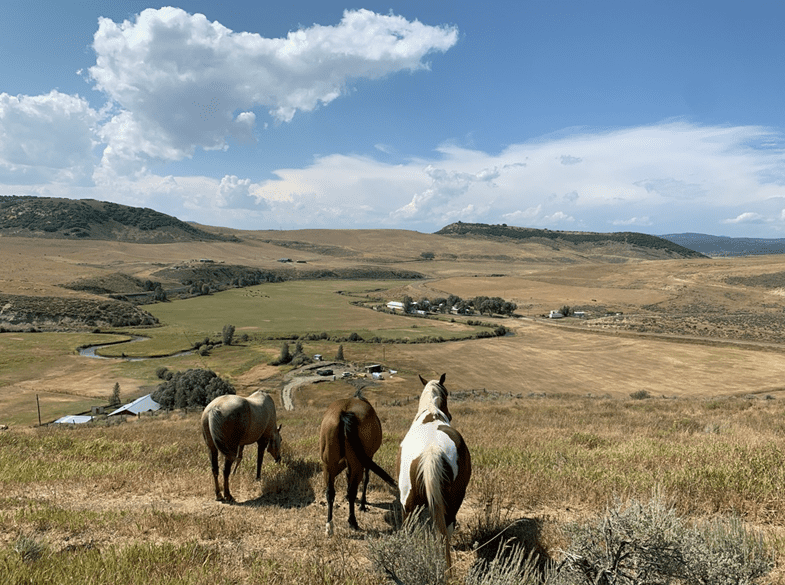
Here, you can learn a whole lot about your horse that you previously had no clue of. Let’s say you begin watching your horse for 5-10 minutes every day before practice, and they seem to habitually tense up right as you enter the pasture to halter up. You have now identified your problem; they have associated being caught with a negative stimulus, leaving a bad taste in their mouth for the rest of your practice session. This simply means its time to present your horse with a new behavior when being caught, to help alleviate this tendency. So maybe when you walk in, instead of immediately haltering up, you give them pets and loving, making them want to come to you. Even their interactions with other horses can tell you a lot about why they might be spooking during practice.
“There’s no I in team.” When you work with your horse, whether its clearing high-level jumps or simply working the ground, you are creating a team based environment, requiring a certain amount of dedication and focus on each end.”
Jordan Bastian
A spooked horse is usually not very fun for anyone involved, but at the end of the day tells us as equestrians a lot about their character. With this in mind, trying to learn more about their spooking behaviours rather than punishing it out of them is far more beneficial in the long run. Just remember, if we treat our horses like horses, we can be more effective at keeping the jump scares in Hollywood and out of our arenas.
This Article By Jordan Bastian was originally published in the March 2021 Issue of Irish Sport Horse Magazine. All Pictures are Courtesy of Jordan Bastian unless otherwise referenced.
